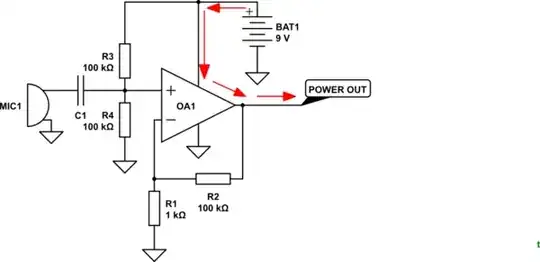Understanding power will be key to this project. In electrical circuits power, voltage and current are related by the equation \$ P = VI \$ or, if we know the resistance, \$ P = \frac {V^2}{R} \$ or \$ P = I^2R \$.
You have a voltage reading but you have taken this with no load resistor so you don't know what current will be supplied when you add a load. Your next step is to find out what the microphone impedance (Z) is. It is probably 600 Ω (lo-Z) or about 10 kΩ (hi-Z).
Lets assume that it is 600 Ω. The Maximum Power Transfer theorem tells us that we can draw maximum power from the source when the load impedance = source impedance. The voltage will fall to half at this point. We can now work out the power using 15 mV as the voltage obtainable:
\$ P = \frac {V^2}{R} = \frac {0.015^2}{600} = 0.000,000,375\ \mathrm W \$.
Now lets look at a battery. I have on my desk a 1.2 V, 800 mAh, NiMH rechargeable cell. We can work out the energy storage in this as \$ 1.2 \times 0.8 = 0.96 \ \mathrm{Wh} \$ (watt-hours).
Now we can calcuate how long you will have to sing for to charge the battery:
\$ t = \frac {capacity}{charge\ rate} = \frac {0.96}{0.000000375} = 2,560,000 \ \mathrm{hours} \$. This is about 292 years.
Do you think you could sing a little louder to speed it up?
From your deleted comment:
But if I'll going to amplify it using op-amp or voltage amplifier, will it be possible?

simulate this circuit – Schematic created using CircuitLab
Figure 1. Amplifying the microphone signal requires power from somewhere else.
No. Amplifiers use a small signal to control power from somewhere else. In Figure 1 the power comes from the battery. The amplifier would waste about half of the power so you would be more efficient just using the battery.

simulate this circuit
Figure 2. A microphone transformer.
Just in case you are thinking of it, a transformer can step up voltage or current but not both. If you step up the voltage the available current decreases by the same ratio.
For a 100% efficient transformer \$ P_{OUT} = P_{IN} \$. Since \$ P = VI \$ we can rewrite this as $$ V_{OUT}I_{OUT} = V_{IN}I_{IN} $$
You can't get more power out than you put in.

